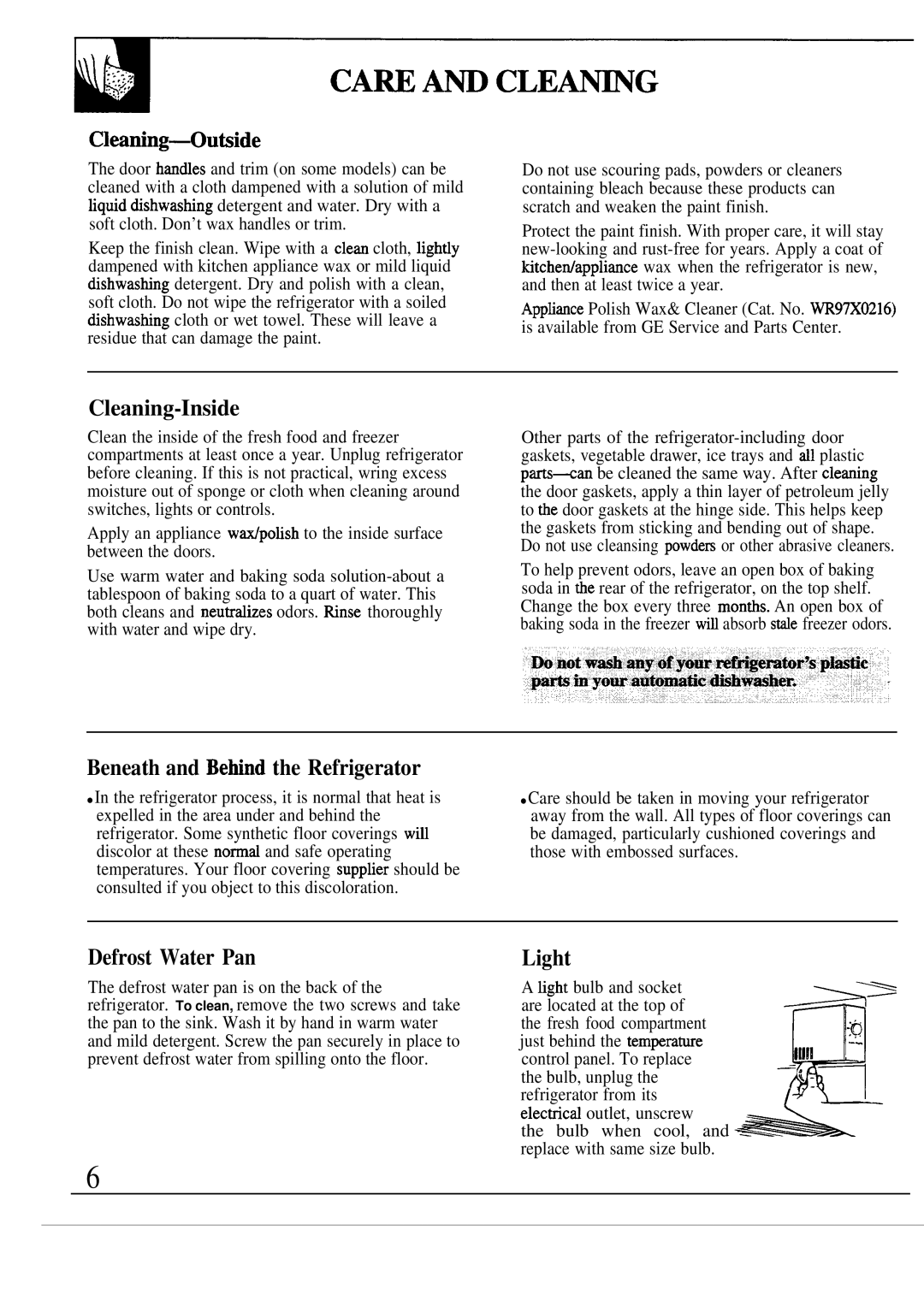
Cleaning-Ou@ide
The door handes and trim (on some models) can be cleaned with a cloth dampened with a solution of mild fiquid dishwashing detergent and water. Dry with a soft cloth. Don’t wax handles or trim.
Keep the finish clean. Wipe with a clean cloth, lighdy dampened with kitchen appliance wax or mild liquid dishwashing detergent. Dry and polish with a clean, soft cloth. Do not wipe the refrigerator with a soiled dishwashing cloth or wet towel. These will leave a residue that can damage the paint.
Do not use scouring pads, powders or cleaners containing bleach because these products can scratch and weaken the paint finish.
Protect the paint finish. With proper care, it will stay
Appfiance Polish Wax& Cleaner (Cat. No. ~97X0216) is available from GE Service and Parts Center.
Cleaning-Inside
Clean the inside of the fresh food and freezer compartments at least once a year. Unplug refrigerator before cleaning. If this is not practical, wring excess moisture out of sponge or cloth when cleaning around switches, lights or controls.
Apply an appliance wtipohsh to the inside surface between the doors.
Use warm water and baking soda
Other parts of the
To help prevent odors, leave an open box of baking soda in the rear of the refrigerator, on the top shelf. Change the box every three montis. An open box of baking soda in the freezer win absorb stie freezer odors.
Beneath and Behd the Refrigerator
●In the refrigerator process, it is normal that heat is expelled in the area under and behind the refrigerator. Some synthetic floor coverings wi~ discolor at these norrnd and safe operating temperatures. Your floor covering suppfier should be consulted if you object to this discoloration.
●Care should be taken in moving your refrigerator away from the wall. All types of floor coverings can be damaged, particularly cushioned coverings and those with embossed surfaces.
Defrost Water Pan
The defrost water pan is on the back of the refrigerator. To clean, remove the two screws and take the pan to the sink. Wash it by hand in warm water and mild detergent. Screw the pan securely in place to prevent defrost water from spilling onto the floor.
Light
A fight bulb and socket | > |
| - | |
are located at the top of |
| |||
| ||||
the fresh food compartment |
|
|
| {~ |
just behind the temperawe | 111!1 |
|
| ‘- |
control panel. To replace |
|
| ||
|
| |||
the bulb, unplug the | =.\- | 7 | ||
refrigerator from its |
| |||
electicd outlet, unscrew
the bulb when cool, and &– replace with same size bulb.
6
